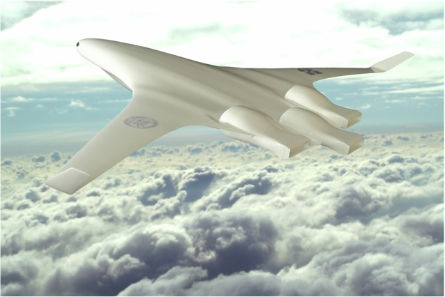Reducing noise from a Boeing 767-sized aircraft to levels so low that take-offs and approaches would not be audible beyond an airport's perimeter is possible with a blended wing body airframe powered by three-fan fully ducted engines, British researchers have concluded.
Cambridge University head of engineering Dame Ann Dowling, presenting the findings of the Silent Aircraft Initiative at the Royal Aeronautical Society on 15 November, said the goal of reducing aircraft noise by 25dB - equal to the reduction already achieved since the start of the jet age and taking noise down to a level less than 1% of today's aircraft - could be achieved by ditching wing-and-tube airframes for slatless, flapless blended wing bodies.
These would feature a "leading carving edge" shape not previously examined by BWB projects, such as the study carried out at Boeing - a Silent Aircraft Initiative partner along with Rolls-Royce and the Massachusetts Institute of Technology.
 |
|---|
© Cambridge University |
Critical to the Cambridge "SAX-40" concept is a radical engine. Studies showed that to achieve target noise levels a conventional turbofan would have to be twice the diameter of even the next-generation engines currently in development, and also mounted above the airframe to shield the ground from its noise.
Such an engine would be impractical, said Dowling, so a radical configuration of a single core driving three 1.2m-diameter fans was conceived.
Cambridge colleague and propulsion specialist Tom Hynes explained that three such engines, mounted side-by-side across the back of and integrated into the tailless airframe, would draw in air from the boundary layer flowing over the top of the aircraft.
Thrust vectoring could help overcome the pitch control issues presented by the absence of a tail.
The Cambridge concept also calls for shrouded landing gear, to slash the significant noise from the undercarriage on today's aircraft.
And, in an idea borrowed from nature's quietest fliers, owls, trailing edge brushes would also feature to dampen the noise from laminar flow air coming off the wings.
The 215-passenger SAX-40 would offer a 5,000nm range, Mach 0.8 cruise and 124 passenger miles per gallon fuel economy.
Source: Air Transport Intelligence news
















